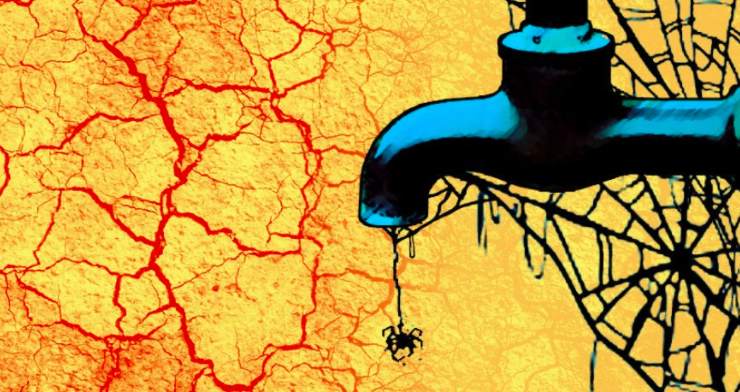
Photo Credit : archive.catchnews.com
Read the original article here.
Water security is a global threat
The phenomenon of climate change is real. The increase in extreme weather events, the uncertainty associated with glacier melting, depleting groundwater, and uneven rainfall can all be attributed to climate change. In particular, limited availability of freshwater creates a crisis situation for some 1.1 billion people worldwide.
With the availability of below 1500 cubic meters of water per capita annually, India is now considered as a water-stressed country. The images released by NASA's Grace satellite indicate that several regions in India including the North-West India which is considered to be the "breadbasket of India" are under critical zones indicating severe depletion in the groundwater table. In an annual survey, it was revealed that farmers consume two to four times more water to produce a unit of major food crops in contrast to China and Brazil.
The water crisis is not unique for India – it's a global phenomenon. Over 880 million people do not have access to clean water within their proximity. The United States Agency for International Development (USAID) predicts that nearly one-third of the world population will be facing a chronic water crisis by 2025. It is evident from the multitude of episodes like zero-days in Cape Town, prolonged drought in California, and water crisis in Australia that we are fast approaching the situation of water scarcity and if not managed appropriately may soon lead to "water wars".
Effective strategies exist
Since water issues are complex there is a need to adopt multipronged mitigation and adaptation approach to deal with it holistically. Water optimization in agriculture can be achieved through judicious use of technology that regulates water apportioning through sensors. Similarly, recycling and reusing of water in water-intensive industries shall go a long way in mitigating water stresses. Watershed management as a technique has also gained wide acceptance in recent times as the most effective way to manage the hydrological balance in the ecosystem.
Trees have a very significant role in the hydrologic cycle as they not only prevent soil erosion but also slow down runoff and facilitate percolation of rainwater. This, in turn, protects the water bodies from silting and enhances groundwater recharge. Deforestation in the three major tropical forest zones of the world, namely the Congo Basin in Africa, Southeast Asia, and Amazon, could disrupt the global water cycle and pose a substantial risk to big agricultural lands. Additionally, widespread deforestation for expanding urban areas and industrialization has severely impacted the water cycle. The drinkability quotient of the water is also compromised due to the accumulation of mud and also results in the flooding in the surrounding areas.
A shared responsibility
Effective climate change mitigation and adaptation strategies must include water optimization, water management, and water harvesting to create a climate resilient environment. Switching from flood irrigation systems to sprinklers or drip irrigation systems could help in saving a tremendous amount of water. Better soil management practices such as mulching reduce the evaporation from soil and reduce water usage.
These strategies work better when coupled with awareness programs that help to bring behavioral change at the community level. The concept of water stewardship needs to be in place in all forms whether installing low flow toilets, taps, harvesting rainwater, reusing greywater, and plugging the leakages. This brings a sense of responsibility towards the environment and water resources. Still, many challenges need to be addressed for mitigating issues concerning sustainable water resources that will ensure its availability for the future generations as well.
